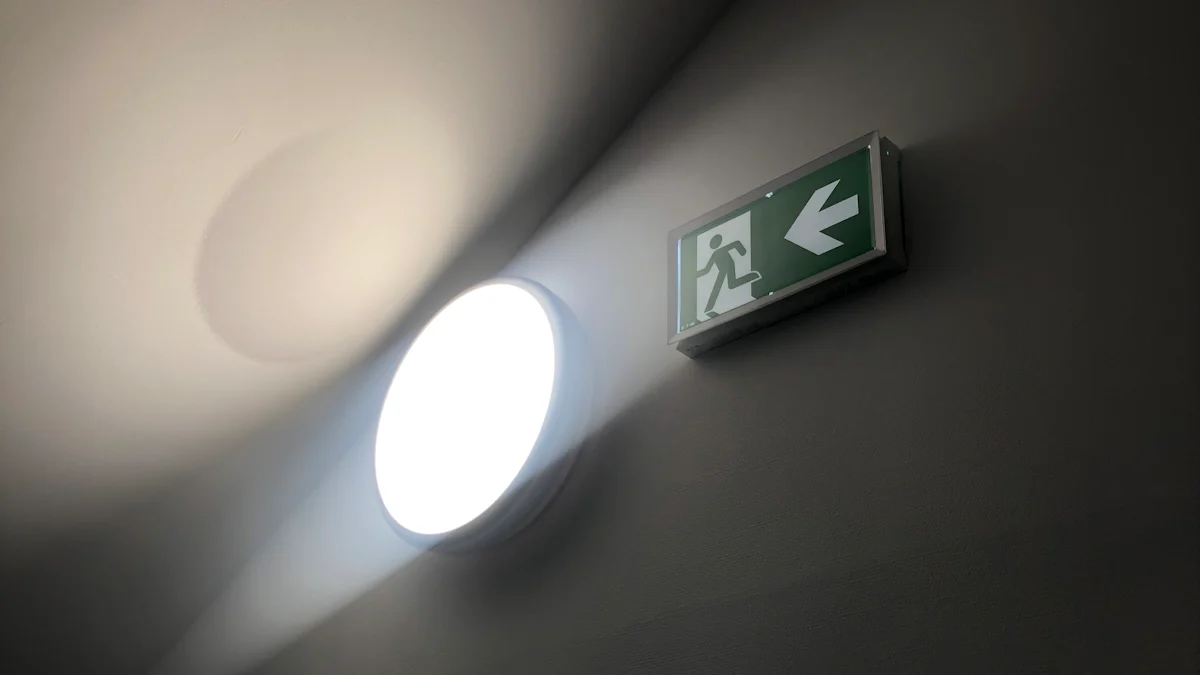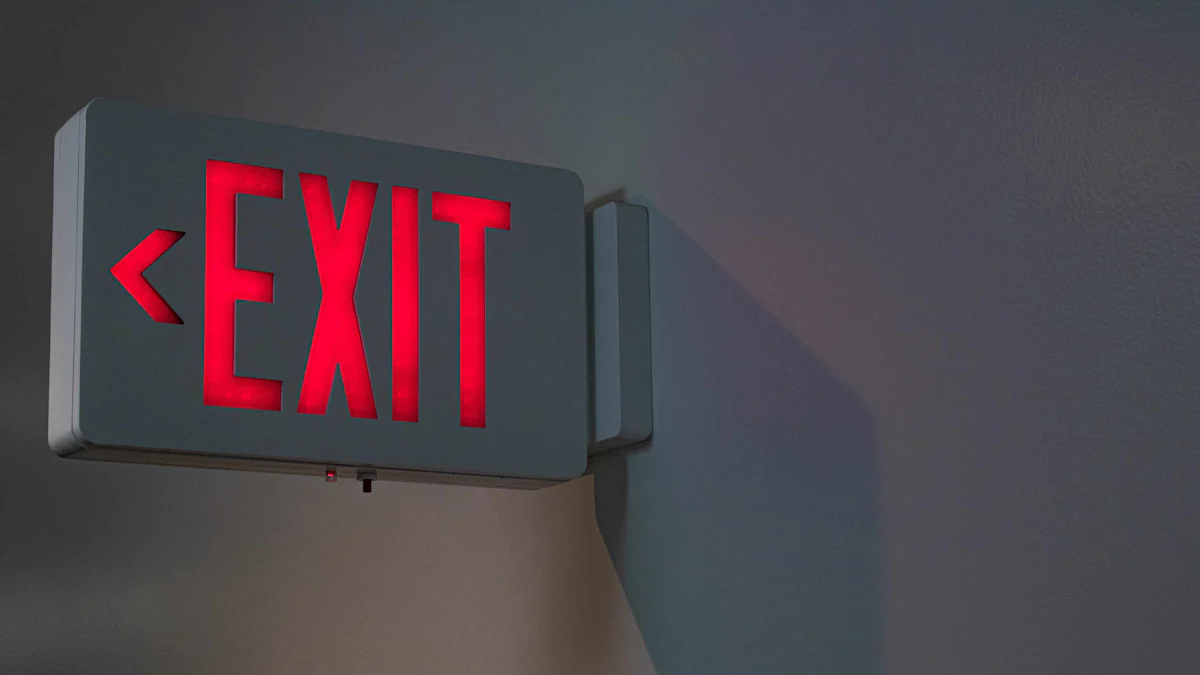How to Pick the Perfect Headlamp for Emergency Lighting

When emergencies strike, having the right headlamp can make all the difference. For most situations, a headlamp with 200-300 lumens provides enough brightness to navigate safely indoors or outdoors. If you’re tackling outdoor activities like hiking or camping, or even more intense scenarios like search-and-rescue, you’ll want a headlamp with 300-500 lumens. These higher levels of brightness are perfect for lighting up trails or spotting distant objects.
To pick the best headlamp, you need to balance key factors like light output, run-time, and durability. A brighter headlamp might drain batteries faster, so consider how long you’ll need it. For outdoor use, water resistance and impact resistance are essential. Whether you’re preparing for a power outage or an outdoor adventure, choosing the right headlamp ensures you’re ready for anything.
Key Takeaways
Pick a headlamp with 200-300 lumens for indoor use. This brightness is enough to see clearly without hurting your eyes.
For outdoor use, get a headlamp with 300-500 lumens. This brightness helps you see paths and objects easily.
Choose one with adjustable brightness and long battery life. These features make sure it works longer without needing new batteries.
Check for durability and water resistance. A headlamp with an IPX4 rating or more can handle rain and rough use.
Multi-use headlamps work well indoors and outdoors. They are handy and useful for many emergency needs.
Understanding Brightness and Lumens

What Are Lumens and Why Are They Important?
When you’re shopping for a headlamp, you’ll often see the term “lumens” on the packaging. But what does it mean? Lumens measure the total amount of light a headlamp produces. Think of it as the “brightness score.” A higher number means a brighter light. For example, headlamps can range from 300 lumens for basic tasks to over 1,500 lumens for intense activities.
However, brightness isn’t the only thing to consider. A super-bright headlamp might drain its battery faster. You also need to think about beam distance and the type of light it produces. These factors work together to determine how well your headlamp performs in real-life situations.
Recommended Brightness Levels for Emergencies
Indoor emergencies (e.g., power outages)
For indoor emergencies like power outages, you don’t need a super-bright headlamp. A model with 200-300 lumens works well. It provides enough light to move around safely without being too harsh on your eyes. Look for a wide beam that spreads light evenly across a room.
Outdoor emergencies (e.g., hiking, survival)
If you’re outdoors, you’ll need more brightness. A headlamp with 300-500 lumens is ideal for hiking or survival situations. This level of light output helps you see trails, obstacles, and your surroundings clearly. A longer beam distance is also important for spotting hazards ahead.
High-intensity scenarios (e.g., search-and-rescue)
For high-stakes situations like search-and-rescue, you’ll want a headlamp with at least 500 lumens. These headlamps provide powerful light that can cut through darkness and illuminate distant areas. They’re perfect for finding people or objects in challenging conditions.
Risks of Choosing the Wrong Brightness
Picking the wrong brightness can cause problems. A headlamp that’s too dim might leave you struggling to see, especially outdoors. On the other hand, a headlamp that’s too bright can drain batteries quickly and create glare, making it harder to focus. Choosing the right balance ensures you’re prepared for any emergency without wasting energy or resources.
How to Choose the Right Headlamp for Your Needs
Indoor Emergency Lighting
When the power goes out, you need a headlamp that’s reliable and easy to use. For indoor emergencies, focus on features that make navigating dark spaces safe and comfortable. Here’s what to look for:
Brightness and Lumens: A headlamp with adjustable brightness levels (200-300 lumens) works best for indoor tasks. It provides enough light without being overwhelming.
Battery Life: Long-lasting battery life is essential. Rechargeable options with battery indicators can help you monitor power levels.
Comfort and Fit: Adjustable straps and padded sections ensure the headlamp stays comfortable, even during extended use.
Durability: Look for models with at least an IPX4 waterproof rating. This ensures the headlamp can handle minor spills or damp conditions.
Additional Modes: Features like red light or strobe modes can add versatility, especially if you need to signal for help.
A wide beam is also important for spreading light evenly across a room. This makes it easier to see everything around you without straining your eyes.
Outdoor Emergency Lighting
Outdoor emergencies demand a headlamp that can handle tougher conditions. You’ll need one with higher lumens and features designed for rugged environments.
Beam Distance: A longer beam distance is crucial for spotting obstacles or hazards on trails. Look for models with 300-500 lumens for optimal light output.
Weather Resistance: Outdoor conditions can be unpredictable. Choose a headlamp with a high waterproof rating (IPX6 or above) to ensure it works in rain or snow.
Safety Features: Adjustable beam angles prevent you from accidentally blinding others. Red light modes help preserve night vision and minimize disturbance to wildlife.
Carrying a backup light source is also a smart move. It ensures you’re never left in the dark if your primary headlamp malfunctions.
Multi-Purpose Headlamps
If you want a headlamp that works for both indoor and outdoor emergencies, go for a multi-purpose model. These headlamps combine versatility with convenience, making them a great addition to any emergency kit.
Advantage | Description |
|---|---|
Hands-free illumination | Lets you perform tasks without holding a flashlight. |
Enhanced safety | Makes you visible to others, reducing the risk of accidents. |
Focused lighting | Provides precise illumination for specific areas. |
Night vision preservation | Red light mode helps maintain awareness in dark conditions. |
Long-lasting power | Ensures reliable light for extended outdoor use. |
Emergency kit essential | A must-have for navigating or signaling during emergencies. |
These headlamps are perfect for anyone who wants a single tool for multiple scenarios. They’re especially useful for activities like night hiking or camping, where you need both durability and flexibility.
Key Features of the Best Headlamp

Brightness and Beam Distance
Flood vs. Spot Beams
When choosing the best headlamp, understanding beam types is crucial. Flood and spot beams serve different purposes, and knowing when to use each can make a big difference.
Flood Beams: These provide a wide, even spread of light, making them perfect for close-range tasks like reading or working in a small space. They’re great for indoor emergencies or when you need to illuminate a broad area.
Spot Beams: These focus light into a narrow, intense beam, offering considerable reach. They’re ideal for outdoor activities like hiking or search-and-rescue, where you need to see far ahead.
Floody Beams: A middle ground between flood and spot, these offer better reach than flood beams while still covering a decent area. If you need versatility, this is a solid choice.
For maximum flexibility, some headlamps let you switch between flood and spot modes. This feature ensures you’re prepared for any situation, whether you’re navigating a dark trail or working on a detailed project.
Run-Time and Battery Efficiency
Importance of Long-Lasting Performance
Run time is a critical factor when selecting a headlamp. You don’t want your light to die in the middle of an emergency. A headlamp with efficient battery usage ensures you get the most out of its max light output without frequent recharges or replacements.
Look for models with adjustable brightness settings. Lowering the lumens when full power isn’t needed can extend battery life significantly. Some headlamps also come with battery indicators, so you’ll always know when it’s time to recharge or replace the batteries. This feature is especially useful during extended outdoor use or power outages.
Rechargeable batteries are eco-friendly and cost-effective, but disposable batteries often have a longer shelf life. If you want the best of both worlds, consider a hybrid headlamp that supports both options.
Durability and Reliability
Water Resistance and Impact Resistance
Emergencies can happen anywhere, so your headlamp needs to withstand tough conditions. Water resistance is essential if you’re caught in the rain or dealing with wet environments. Look for a headlamp with an IPX4 rating or higher. For outdoor adventures, an IPX6 or IPX7 rating offers even better protection.
Impact resistance is just as important. A durable headlamp can survive accidental drops or rough handling. Many models are built with rugged materials to ensure they keep working when you need them most.
A reliable headlamp combines these features with peak beam intensity and long-lasting performance. It’s not just about high lumens or brightness—it’s about having a tool you can count on in any situation.
Battery Options for Emergency Headlamps
When choosing a headlamp for emergencies, the type of battery it uses plays a huge role in its performance and reliability. Let’s explore the three main options—rechargeable, disposable, and hybrid batteries—so you can decide which one works best for you.
Rechargeable Batteries
Rechargeable batteries are a popular choice for emergency headlamps, and for good reason. They offer several advantages that make them both practical and eco-friendly.
Pros
Convenience: Many rechargeable headlamps come with battery indicators, so you’ll always know how much power is left.
Cost-effectiveness: While the upfront cost might be higher, you’ll save money in the long run since you won’t need to keep buying new batteries.
Environmental friendliness: By reducing the number of disposable batteries you use, you’re helping to cut down on waste.
Reliability: Rechargeable batteries often perform better in extreme conditions, like cold weather, and they’re less likely to leak compared to alkaline batteries.
Some rechargeable headlamps, like the Fenix HP30R V2.0, even let you recharge on the go. This model includes a 10,000 mAh battery case that doubles as a power bank, so you can charge your headlamp and other devices when you’re out and about.
Cons
Reliance on power sources: You’ll need access to electricity or a portable charger to recharge your headlamp. This can be a challenge during extended power outages or outdoor trips.
Limited shelf life: Rechargeable batteries can lose their capacity over time, especially if not used or maintained properly.
Disposable Batteries
Disposable batteries are another option, and they’re often favored for their simplicity and reliability in emergencies.
Pros
Long shelf life: Disposable batteries can sit unused for years without losing their charge, making them perfect for emergency kits.
Easy replacement: You can quickly swap out dead batteries with fresh ones, ensuring your headlamp stays functional when you need it most.
Cons
Higher long-term cost: Constantly buying new batteries can add up over time, making this option less economical.
Environmental impact: Disposable batteries contribute to landfill waste, which isn’t great for the planet.
Hybrid Battery Options
If you’re torn between rechargeable and disposable batteries, hybrid headlamps might be the perfect solution. These models let you use both types of batteries, giving you the best of both worlds.
Combining the Benefits of Both Types
Hybrid headlamps offer unmatched flexibility. You can use rechargeable batteries for everyday use and switch to disposable ones during emergencies when recharging isn’t an option. This dual compatibility ensures you’ll always have a reliable light source, no matter the situation. Plus, hybrid models often feature excellent run time, so you won’t have to worry about your headlamp dying when you need it most.
Choosing the right battery option depends on your needs and how you plan to use your headlamp. Whether you prioritize battery life, cost, or environmental impact, there’s an option that fits your lifestyle.
Additional Features to Look For
Red Light Mode and Strobe Function
Sometimes, you need more than just a bright white light. That’s where red light mode and strobe functions come in handy. Red light mode is perfect for preserving your night vision. It’s especially useful when you’re camping, stargazing, or navigating in the dark without disturbing others. Plus, it’s less likely to attract insects, which is always a bonus outdoors.
The strobe function, on the other hand, is a lifesaver in emergencies. It can signal for help or alert others to your presence. Whether you’re lost in the wilderness or dealing with a roadside breakdown, this feature ensures you’re visible when it matters most. Many headlamps include these modes as standard, so keep an eye out for them when making your choice.
Adjustable Straps and Comfort
A good headlamp shouldn’t just light your way—it should also feel comfortable to wear. Adjustable straps make all the difference here. They let you customize the fit, ensuring the headlamp stays secure without digging into your skin. Look for straps with padding or soft materials for added comfort, especially if you’ll be wearing the headlamp for long periods.
Comfort isn’t just about the straps, though. The overall design plays a role too. A well-balanced headlamp distributes its weight evenly across your head, reducing strain. If the headlamp feels too tight or heavy, it can quickly become a distraction. So, test the fit and adjustability before committing to a model.
Weight and Portability
When it comes to headlamps, weight matters more than you might think. A lightweight headlamp is easier to wear for extended periods, especially during activities like hiking or working in the dark. But it’s not just about how much it weighs—it’s also about how that weight is distributed. A poorly balanced headlamp can feel unstable and uncomfortable, even if it’s light.
Materials also play a big role. Durable yet lightweight materials, like aluminum or high-quality plastics, strike the perfect balance between strength and portability. The strap design is equally important. A well-designed strap can alleviate pressure and improve the overall fit, making the headlamp feel lighter than it actually is.
To evaluate a headlamp’s weight, think about how it feels during extended use. Does it strain your head or neck? Does it stay stable when you move? These factors help you find a headlamp that’s both functional and comfortable.
Choosing the right headlamp for emergencies doesn’t have to be complicated. For most situations, a model with 200-300 lumens will meet your needs. If your intended use involves outdoor adventures or high-stakes scenarios, go for higher brightness levels. Always prioritize features like beam type, run-time, and durability to ensure your headlamp performs when it matters most.
Here’s a quick breakdown of features that balance performance and usability:
Feature | Description |
|---|---|
Lumen count | 200-300 lumens for everyday tasks; higher lumens for outdoor use. |
Beam distance and shape | Wide beams for close tasks; narrow beams for long-distance visibility. |
Average run time and power source | Look for models lasting 5-10 hours with rechargeable or hybrid battery options. |
Weight | Lightweight designs (1.2 to 8 ounces) for comfort and portability. |
Bulb type | LED bulbs for brightness and red LEDs for night vision preservation. |
When it comes to brands, reliable options like Black Diamond, Petzl, and Fenix stand out. For emergencies, the Black Diamond ReVolt 350 is a top choice due to its versatility and dependability.
Avoid common mistakes like choosing headlamps with vague waterproof ratings or overly complex controls. A simple, intuitive design ensures you can use your headlamp effectively in any situation.
Ultimately, the best headlamp is one that balances performance, reliability, and usability. With the right choice, you’ll be ready for anything life throws your way.
FAQ
What is the best brightness level for a headlamp in emergencies?
It depends on the situation. For indoor use, 200-300 lumens work well. Outdoor activities like hiking or survival need 300-500 lumens. High-intensity tasks, such as search-and-rescue, require at least 500 lumens for optimal visibility.
How do I know if a headlamp is waterproof?
Check the IP rating. An IPX4 rating means it can handle light splashes, while IPX6 or higher ensures protection against heavy rain or submersion. Always choose a rating that matches your environment.
Can I use rechargeable batteries for emergencies?
Yes, rechargeable batteries are great for regular use. However, keep disposable batteries as a backup for emergencies. Hybrid headlamps let you switch between both, giving you flexibility when recharging isn’t possible.
How long should a headlamp’s battery last?
Battery life varies by model and brightness setting. On low settings, many headlamps last 10-20 hours. High brightness drains batteries faster, so look for models with adjustable settings to extend run time.
Are red light modes really useful?
Absolutely! Red light modes preserve your night vision and reduce glare. They’re perfect for camping, stargazing, or reading maps in the dark. Plus, they’re less likely to attract bugs, making them ideal for outdoor use.
See Also
Essential Tips for Selecting the Ideal Headlamp
A Homeowner's Guide to Selecting the Perfect Emergency Flashlight
Key Factors to Consider When Buying a Headlamp
